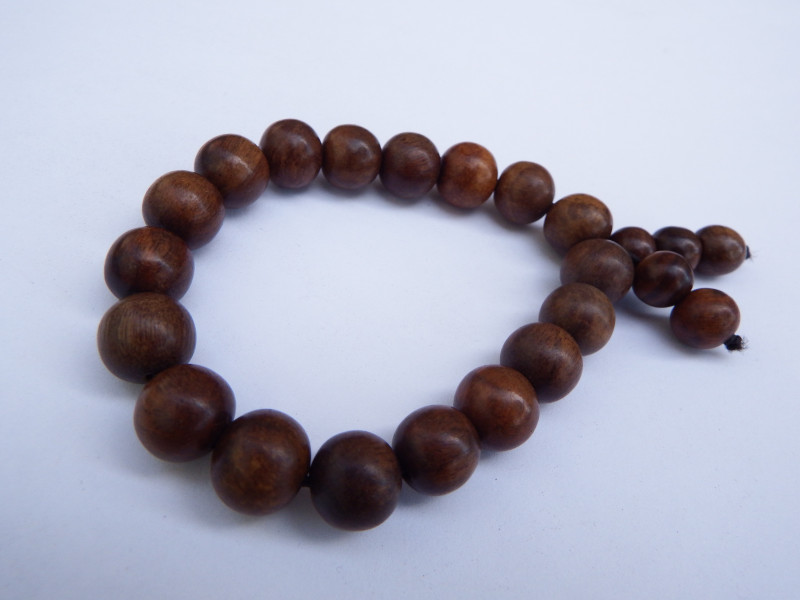Vous n'avez pas enchéri sur cette enchère.
51.85ct 2 pcs Polished Ancient Dzi Bead Thunder bolt & 5 eyed Gem lot Tibet
- UGS
- Dimensions (mm)
- 27.000 x 10.000 x 10.000mm
- Poids (g)
- 10.370
- Couleurs
-
51.85ct 2 pcs Polished Ancient Dzi Bead Thunder bolt & 5 eyed Gem lot Tibet
Dzi beads are a type of ancient stone bead that originated in the Tibetan region, particularly in Tibet, Nepal, Bhutan, and parts of India. These beads are highly prized for their supposed spiritual and healing properties and are often used in Tibetan Buddhist practices.
Dzi beads are typically made from agate, although their exact composition and origin have been the subject of much debate and mysticism. They are characterized by intricate patterns, usually consisting of lines, circles, or eyes, which are believed to represent various symbols and deities in Tibetan Buddhism.
According to Tibetan tradition, Dzi beads are imbued with protective and auspicious qualities, offering their wearers blessings, good fortune, and protection from harm. They are often worn as jewelry, either as necklaces or bracelets, and are considered valuable and precious items.
Due to their rarity and spiritual significance, authentic Dzi beads can be quite expensive and are highly sought after by collectors and spiritual practitioners alike. However, the market for Dzi beads is also rife with counterfeit and imitation beads, making it essential for buyers to exercise caution and seek out reputable sources when purchasing them.
- UGS
- Dimensions (mm)
- 27.000 x 10.000 x 10.000 mm
- Poids (g)
- 10.370
- Couleurs
-
51.85ct 2 pcs Polished Ancient Dzi Bead Thunder bolt & 5 eyed Gem lot Tibet
Dzi beads are a type of ancient stone bead that originated in the Tibetan region, particularly in Tibet, Nepal, Bhutan, and parts of India. These beads are highly prized for their supposed spiritual and healing properties and are often used in Tibetan Buddhist practices.
Dzi beads are typically made from agate, although their exact composition and origin have been the subject of much debate and mysticism. They are characterized by intricate patterns, usually consisting of lines, circles, or eyes, which are believed to represent various symbols and deities in Tibetan Buddhism.
According to Tibetan tradition, Dzi beads are imbued with protective and auspicious qualities, offering their wearers blessings, good fortune, and protection from harm. They are often worn as jewelry, either as necklaces or bracelets, and are considered valuable and precious items.
Due to their rarity and spiritual significance, authentic Dzi beads can be quite expensive and are highly sought after by collectors and spiritual practitioners alike. However, the market for Dzi beads is also rife with counterfeit and imitation beads, making it essential for buyers to exercise caution and seek out reputable sources when purchasing them.
| Fournisseur d'expédition | Expédition vers Canada | Expédition dans le reste du monde |
|---|---|---|
| Standard Shipping - Tracked | $17.00 / 7 | $16.50 / 7 |
|
Canada
Standard Shipping - Tracked bénéficie d'une remise de $21.00 sur les commandes contenant 2 ou plus d'articles
Reste du monde
Standard Shipping - Tracked bénéficie d'une remise de $21.50 sur les commandes contenant 2 ou plus d'articles
|
||

-
 Positif
PositifPaid and shipped - no feedback left after 100 days
-
 Positif
PositifBeautiful bracelet
-
 Positif
Positif.Very nice looking cross. Very delicate looking
-
 Positif
PositifPaid and shipped - no feedback left after 100 days
-
 Positif
PositifPaid and shipped - no feedback left after 100 days
-
 Positif
PositifPaid and shipped - no feedback left after 100 days
Pourquoi les utilisateurs se surenchérissent-ils ?
Lorsqu'une enchère est placée, il s'agit du montant maximum qu'une personne est prête à enchérir pour le produit. Notre système enchérira alors automatiquement au nom de l'enchérisseur, augmentant progressivement l'enchère jusqu'au maximum pour maintenir sa position de meilleur enchérisseur.
Lorsqu'une icône indiquant « Enchère automatique » apparaît, cela signifie que notre système place activement des enchères pour l'enchérisseur en fonction de son enchère maximale. Cela peut donner l'impression que les enchérisseurs se surenchérissent, mais c'est simplement le résultat de la mise à jour de l'enchère par le système pour refléter la limite maximale des enchérisseurs.















